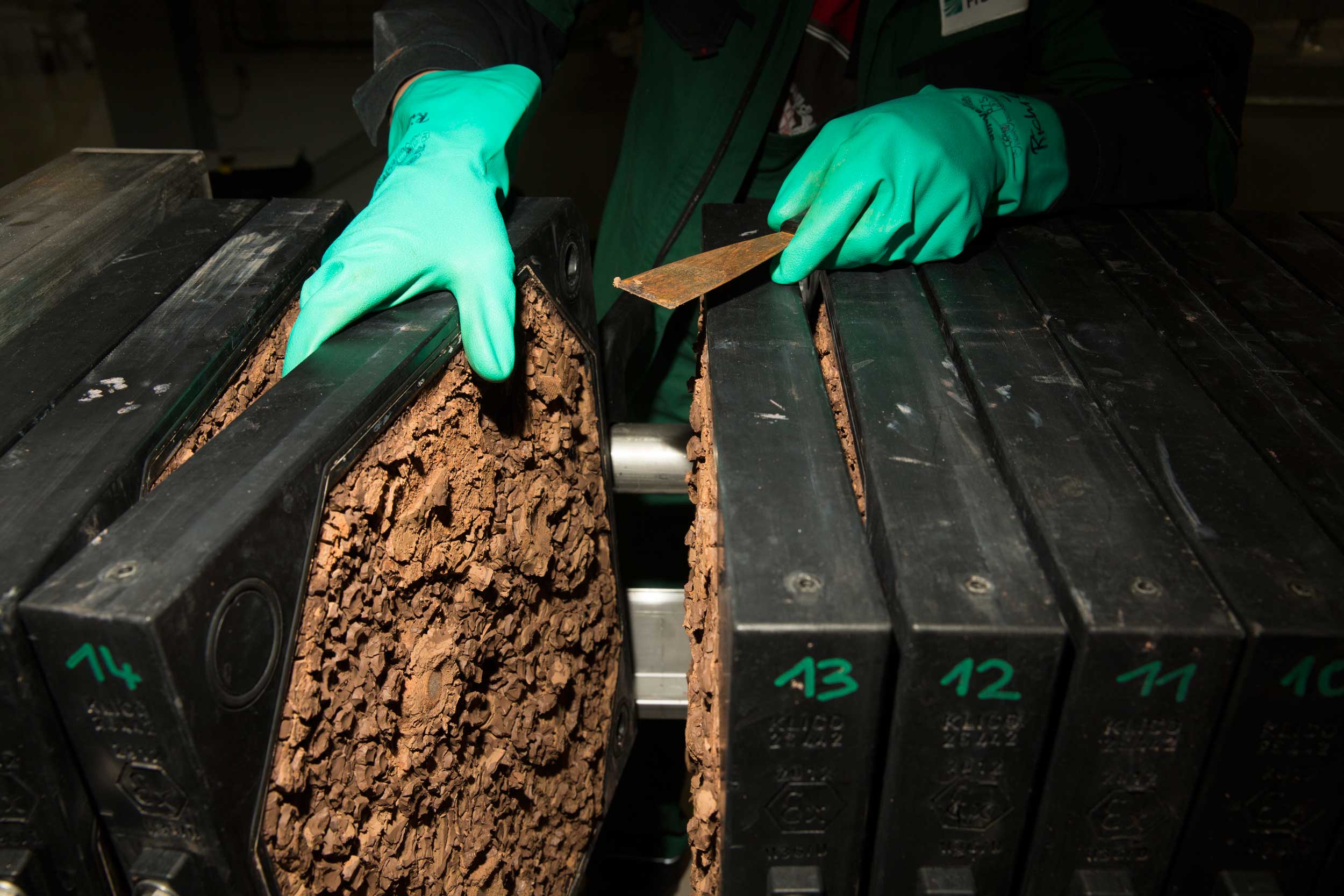Fraunhofer CBP supplies lignin for biobased materials
Using ultrapure lignin from the lignocellulosic biorefinery at the Fraunhofer Center for Chemical-Biotechnological Processes CBP in Leuna, researchers at the Technical University of Hamburg-Harburg (TU HH) have produced lignin-containing aerogels and processed high-porosity insulating boards with excellent insulation properties. The lignin was recovered from beech residual wood at the Fraunhofer CBP using the Organosolv process.
Lignin is one of the main components of woody plant parts. Embedded in the plant cell wall, the complex organic matter gives the wood its compressive and breaking strength. So far, lignin is mainly as – contaminated with sulfur – by-product in paper and pulp production available.
With the organosolv process developed by Fraunhofer, lignocellulose, the structural material of wood, is fractionated into its basic constituents only with water and alcohol. Among other things, high-purity lignin is produced, which can also serve as a valuable raw material for chemical industries. At Fraunhofer CBP, the process was successfully transferred to pilot scale four years ago and will be further developed in other projects. In the project "Substance Use of Lignin: Nanoporous Materials", which is funded by the Federal Ministry of Food and Agriculture (BMEL) through the project agency Fachagentur Nachwachsende Rohstoffe e. V. (FNR), Fraunhofer CBP supplied high quality organosolv lignin.
"We fractionate the wood into its main components, lignin, hemicellulose and cellulose, by boiling it with water and alcohol at high temperature and high pressure, almost like in a pressure cooker," says Dr. Moritz Leschinsky, group manager at Fraunhofer CBP. The lignin and hemicelluloses dissolve in the liquid while the fibrous cellulose remains firm. In a second step, the scientists extract the lignin from the liquid by cutting it and separating it. After removal of the alcohol, the hemicellulose sugars remain. If necessary, the solid fibrous cellullose residue is mixed with enzymes and saccharified, that is to say cleaved into individual glucose molecules.
Lignin-based aerogels as the basis for highly porous insulation boards
The lignin can be used for biomaterials or used as a binder for the wood industry. Because of the chemically interesting structures, researchers at Fraunhofer CBP are also pursuing approaches to extract aromatic raw materials from the complex natural product. The cellulose obtained, broken down into its sugar components, is used, for example, as "food" by microorganisms. Thus, also at the CBP, fermentations with lignocellulose sugar, bio-based acids or fuels are produced.
The production of new materials – so-called aerogels – from this Organosolv lignin was successfully demonstrated by the TU Hamburg-Harburg.
The material properties are specifically controlled by the lignin recovery itself as well as by the nature of the subsequent chemical crosslinking. However, this approach requires a basic understanding of the property functions of lignin production and the like. -processing: the digestion parameters should be optimized in such a way that the best possible quality features of the aerogels are guaranteed and at the same time the given added value of the biorefinery process is preserved as far as possible. For this purpose, two different biorefinery processes were optimized in the project so that lignins with reproducibly high quality could be produced on a multi-kilogram scale for this application.
The project "Substance Use of Lignin: Nanoporous Materials" was funded by the Federal Ministry of Food and Agriculture (BMEL) through the project agency Fachagentur Nachwachsende Rohstoffe e. V. (FNR). The final report is available on fnr.de under grant number 22018312. In addition to the TU HH and the Fraunhofer Center for Chemical-Biotechnological Processes CBP, the project involved the University of Natural Resources and Applied Life Sciences in Vienna, the Bavarian Center for Applied Energy Research and companies.
 Fraunhofer Institute for Interfacial Engineering and Biotechnology IGB
Fraunhofer Institute for Interfacial Engineering and Biotechnology IGB